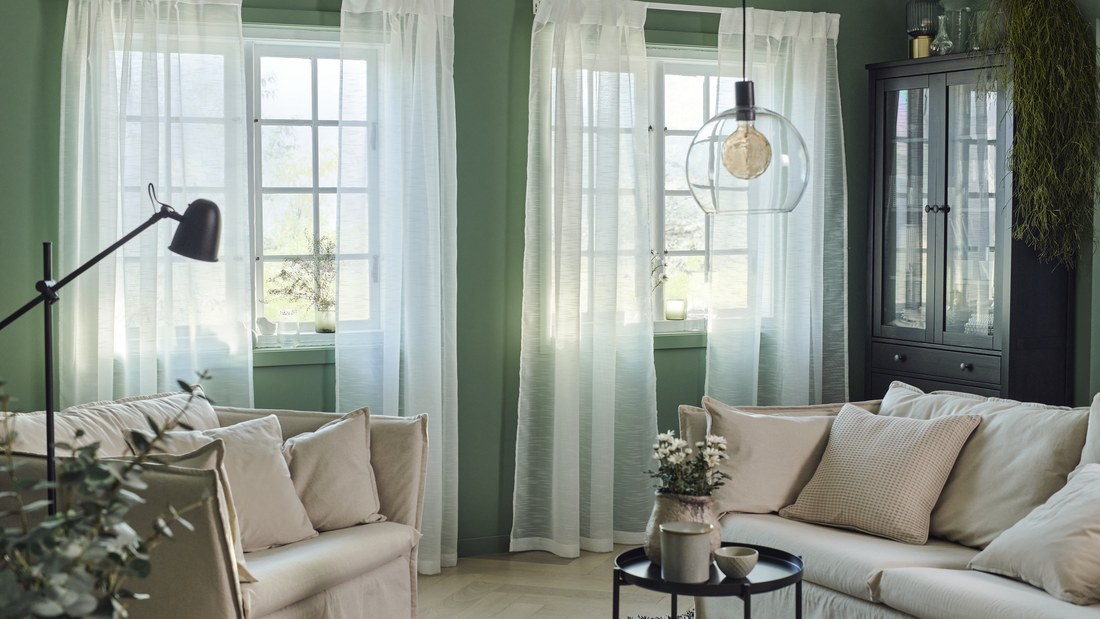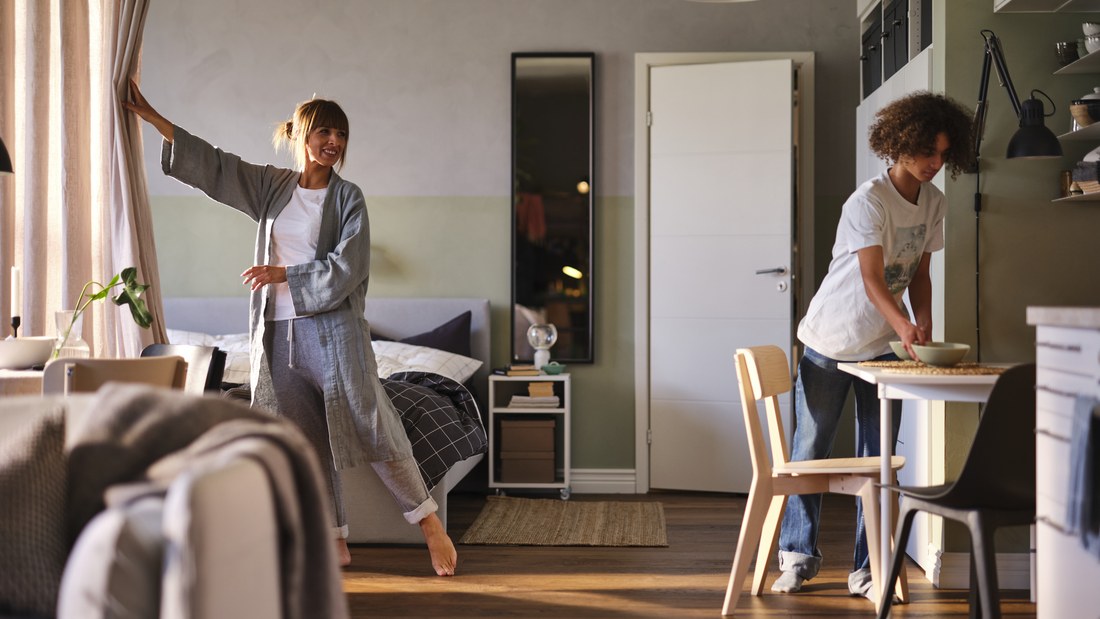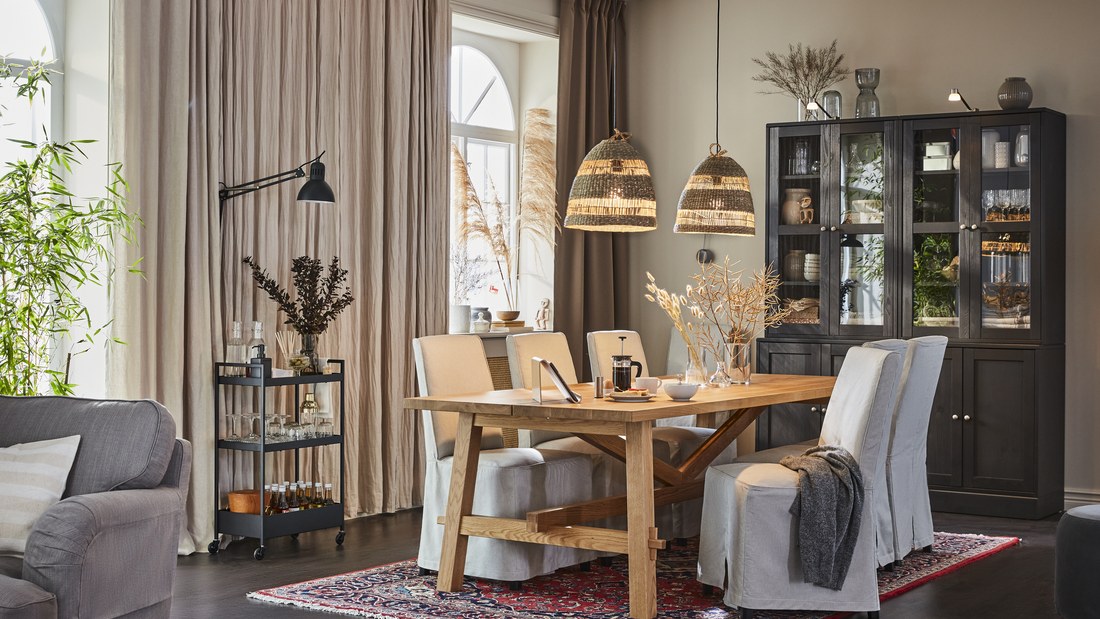Proper curtain installation can provide the perfect finishing touch and create a better room impression. Here is a step-by-step guide to correctly installing curtains, ensuring they cover the door frame well and function optimally:
Install the curtain rail or rod according to the curtain type
- Choose the rail or rod type: Select a rail or rod that matches the type of curtain you’ve chosen. Rails are usually more suitable for curtains with rings, while rods might be better for curtains with hooks.
- Mark the installation position: Use a pencil and level to mark the position of the rail or rod on the wall. Make sure to place it at the right height, typically around 10-15 cm above the window or door. Carefully mark both ends to ensure the curtain installation looks level.
- Install the rail or rod: If using a rail, drill holes at the marked points, install the rail supports, and place the rail onto the supports, ensuring everything is securely and evenly installed. For curtain rods, drill holes for the brackets, install the rod supports, and place the rod on the supports. Make sure the supports are strong enough to hold the curtains securely.
Detailed curtain installation steps
- Prepare the curtains: If your curtains come with rings or hooks, attach the rings or hooks to the curtains according to the type of rail or rod you’re using. Ensure the curtains extend beyond the window or door size to cover the frame fully and create an elegant look.
- Hang the curtains: If using a rail, hang the curtains on the rail carefully, ensuring they move smoothly. For rods, place the curtains on the rod and adjust so the curtains fully cover and look neat.
- Adjust and tidy: After hanging the curtains, check and adjust their position. Make sure the curtains hang evenly and are not bunched up. Smooth out any folds if necessary and ensure the curtains cover the door frame well.
Tips for avoiding common mistakes when installing curtains
- Correct sizing: Ensure you measure the window or door size accurately and choose curtains that fit well. Curtains that extend beyond the window or door size provide good coverage and a fuller look.
- Level installation: Carefully check the height and alignment of the rail or rod. Uneven installation can make the curtains look unprofessional. Mark the position accurately before installation.
- Secure supports and screws: Ensure all supports and screws are tightly installed. Poorly installed supports can cause the curtains to be unstable and risk falling.
- Check curtain function: Before finishing, ensure the curtains can be drawn and hung smoothly. Check if the curtains slide easily on the rail or rod and do not get stuck at the window ends.
Curtain care and tips
To keep your curtains looking fresh and new, routine care is essential. Start by cleaning the curtains according to the fabric instructions, as different materials require specific care. Lightweight curtains like linen or cotton can usually be machine-washed, while heavier fabrics like velvet may require dry cleaning.
Always check the care instructions on the label, especially if the curtains have special fabric layers or sewing techniques. Regular cleaning prevents dust and stain buildup, maintaining color and texture. Also, remember to check and clean the curtain rail or rod periodically to keep it functioning optimally.
For those who own a home and want to keep the interior looking fresh, consider changing curtains according to the season or the latest interior trends. Heavier, darker-colored curtains provide warmth and comfort during winter, while lighter, brighter curtains create a fresh atmosphere in summer.
For a dynamic look, you can use curtains or rods that span the width of the window or door, adapting to the shape and function of the space. Regularly updating curtains also allows you to align them with the latest design trends and adjust their folds to maintain a tidy and attractive appearance.
Curtain installation with IKEA solutions


